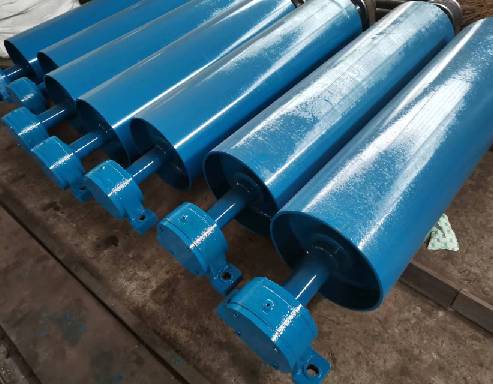 Afrikaans
Afrikaans  Albanian
Albanian  Amharic
Amharic  Arabic
Arabic  Armenian
Armenian  Azerbaijani
Azerbaijani  Basque
Basque  Belarusian
Belarusian  Bengali
Bengali  Bosnian
Bosnian  Bulgarian
Bulgarian  Catalan
Catalan  Cebuano
Cebuano  Corsican
Corsican  Croatian
Croatian  Czech
Czech  Danish
Danish  Dutch
Dutch  English
English  Esperanto
Esperanto  Estonian
Estonian  Finnish
Finnish  French
French  Frisian
Frisian  Galician
Galician  Georgian
Georgian  German
German  Greek
Greek  Gujarati
Gujarati  Haitian Creole
Haitian Creole  hausa
hausa  hawaiian
hawaiian  Hebrew
Hebrew  Hindi
Hindi  Miao
Miao  Hungarian
Hungarian  Icelandic
Icelandic  igbo
igbo  Indonesian
Indonesian  irish
irish  Italian
Italian  Japanese
Japanese  Javanese
Javanese  Kannada
Kannada  kazakh
kazakh  Khmer
Khmer  Rwandese
Rwandese  Korean
Korean  Kurdish
Kurdish  Kyrgyz
Kyrgyz  Lao
Lao  Latin
Latin  Latvian
Latvian  Lithuanian
Lithuanian  Luxembourgish
Luxembourgish  Macedonian
Macedonian  Malgashi
Malgashi  Malay
Malay  Malayalam
Malayalam  Maltese
Maltese  Maori
Maori  Marathi
Marathi  Mongolian
Mongolian  Myanmar
Myanmar  Nepali
Nepali  Norwegian
Norwegian  Norwegian
Norwegian  Occitan
Occitan  Pashto
Pashto  Persian
Persian  Polish
Polish  Portuguese
Portuguese  Punjabi
Punjabi  Romanian
Romanian  Russian
Russian  Samoan
Samoan  Scottish Gaelic
Scottish Gaelic  Serbian
Serbian  Sesotho
Sesotho  Shona
Shona  Sindhi
Sindhi  Sinhala
Sinhala  Slovak
Slovak  Slovenian
Slovenian  Somali
Somali  Spanish
Spanish  Sundanese
Sundanese  Swahili
Swahili  Swedish
Swedish  Tagalog
Tagalog  Tajik
Tajik  Tamil
Tamil  Tatar
Tatar  Telugu
Telugu  Thai
Thai  Turkish
Turkish  Turkmen
Turkmen  Ukrainian
Ukrainian  Urdu
Urdu  Uighur
Uighur  Uzbek
Uzbek  Vietnamese
Vietnamese  Welsh
Welsh  Bantu
Bantu  Yiddish
Yiddish  Yoruba
Yoruba  Zulu
Zulu take up pulley in belt conveyor
The Role of Take-Up Pulleys in Belt Conveyors
Belt conveyors are integral components of many industries, facilitating the efficient movement of materials across various distances. One crucial element of this system is the take-up pulley. Understanding the function and importance of take-up pulleys can enhance the operational efficiency of belt conveyors and ensure their longevity.
What is a Take-Up Pulley?
A take-up pulley is a component of a belt conveyor system that is designed to maintain tension in the conveyor belt. Located at the end of the conveyor system, the take-up pulley can be either fixed or movable, depending on the design of the conveyor. Its primary purpose is to adjust the tension of the belt, which is essential for maintaining the smooth operation of the conveyor and preventing slippage.
Importance of Tension Control
The proper tension of the conveyor belt is vital for several reasons. First, it helps ensure that the belt moves smoothly and uniformly, minimizing wear and tear on both the belt and the pulleys. Insufficient tension can lead to slippage, causing the belt to drift off its track or wear unevenly. Conversely, excessive tension can result in damage to the belt and increased energy consumption, leading to higher operational costs.
Maintaining optimal tension also plays a critical role in the relationship between the belt and the material it conveys. If the tension is not adequately adjusted, it could lead to an inadequate grip on the materials being transported, resulting in spills and inefficiencies in the process.
Types of Take-Up Mechanisms
take up pulley in belt conveyor

There are primarily two types of take-up mechanisms used in belt conveyors automatic and manual. Automatic take-up systems are equipped with tension sensors that adjust the tension in real time, ensuring that the belt remains taut throughout its operation. These systems are prevalent in modern conveyor designs due to their efficiency and reliability.
Manual take-up systems, on the other hand, require operators to adjust the tension manually. While these systems are simpler and less expensive, they can be time-consuming and may lead to human error, emphasizing the need for regular inspections and adjustments by trained personnel.
Maintenance and Operational Considerations
Regular maintenance of take-up pulleys is essential for the overall health of a belt conveyor system. Operators should routinely inspect the take-up mechanism for signs of wear, lack of lubrication, or misalignment. A well-maintained take-up pulley not only extends the life of the belt but also improves energy efficiency and productivity.
Furthermore, operators should be trained in the proper procedures for adjusting the take-up pulley, ensuring they can maintain optimal tension under varying load conditions. Understanding how to balance the forces acting on the belt will allow operators to make informed decisions regarding tension adjustments.
Conclusion
In conclusion, take-up pulleys are a vital component of belt conveyor systems, playing an essential role in maintaining belt tension and ensuring smooth operations. Effective tension management contributes to reduced downtime, lower maintenance costs, and enhanced efficiency. By understanding the importance of take-up pulleys and maintaining them diligently, industries can optimize their conveyor systems, leading to improved productivity and greater overall success.
-
Revolutionizing Conveyor Reliability with Advanced Rubber Lagging PulleysNewsJul.22,2025
-
Powering Precision and Durability with Expert Manufacturers of Conveyor ComponentsNewsJul.22,2025
-
Optimizing Conveyor Systems with Advanced Conveyor AccessoriesNewsJul.22,2025
-
Maximize Conveyor Efficiency with Quality Conveyor Idler PulleysNewsJul.22,2025
-
Future-Proof Your Conveyor System with High-Performance Polyurethane RollerNewsJul.22,2025
-
Driving Efficiency Forward with Quality Idlers and RollersNewsJul.22,2025





























